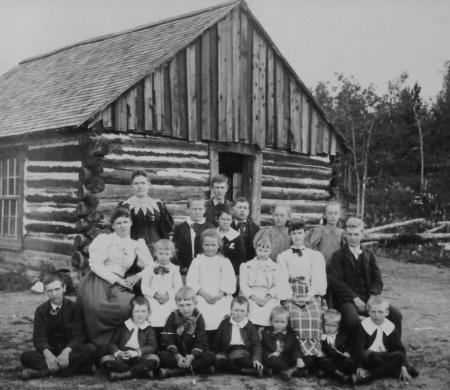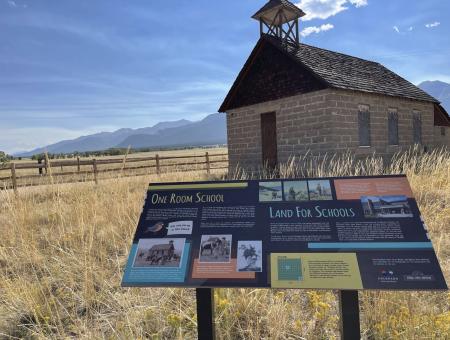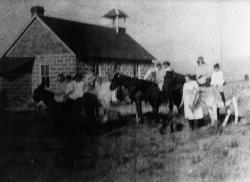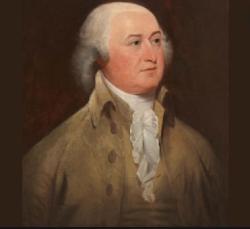Historic schoolhouses on trust land
Since statehood in 1876, the Colorado State Land Board has managed and leased trust land in order to earn money for school kids.
America’s founding fathers developed the concept of using land to support schools. Their original concept was that schoolhouses should be located on trust land. Many small, single-room schoolhouses were erected on trust land in the late 1800s.
Over time, populations grew and communities needed larger schools more proximate to neighborhoods. Today, very few, if any, modern-era schools are located on trust land. Instead, trust land is now leased for assorted uses and the rent helps fund public schools. We're proud that leases on trust land have generated $2 billion for public schools in the past 15 years.
Most historic schoolhouses were demolished. But several remain and have been converted to local historic sites, such as the the Maxwell Schoolhouse in Buena Vista.
Maxwell Schoolhouse receives historic designation
Our Board partnered with the Chaffee County Heritage Area Advisory Board to help the Maxwell Schoolhouse in Buena Vista be listed on the National and State Historic Registries. The Colorado State Register of Historic Properties is a listing of the state’s significant cultural resources worthy of preservation for the future education and enjoyment of Colorado’s residents and visitors.
Today, anyone can visit the site, which is located on County Road 321 en route to the popular Mt. Princeton Hot Springs. Plus, 4th graders from the Buena Vista school district take annual field trips to the site.
The Maxwell School was built at the turn of the 19th century and is considered a fine example of a one-room school house. The Maxwell School opened in 1889 and was used until 1933.
Behind the school building was a barn for the kids to keep their horses while they were in school for the day. Attached to the back of the school was a cement shed to store the coal for the big stove that heated the building. There were two outhouses in the back, one for girls and one for boys. Inside, you'd find wooden desks, the teacher’s desk, an Edna pump organ, maps in wall cases you could pull down, slate blackboards, and a bucket with a dipper for a drink.
Records indicate that 26 people (25 women and one man) taught at the school over the years. Some of the teachers lived at the nearby Nachtrieb ranch (now Kelly Ranch) and rode a horse to school. The teacher had to start the stove, pump water from the well, and sweep and clean the building.
Sometimes known as the Mt. Princeton School, the school building was built of handmade cement blocks; hand and fingerprints in the blocks are visible. Fish scale shingles are on gables at the peak at front and back of the school. Originally a bell tower hung on the front of the roof. Today, the bell tower still remains in tact, though the bell is no longer present.
Over time and due to lack of use, the building deteriorated and was vandalized. Thankfully, in 2020, the site was repaired and received historic designation status. Prior to those recent repairs, the Buena Vista Heritage Society raised money to reroof the school in the early 2000s. That work was done by a labor crew from the Colorado Correctional Facility. The Buena Vista Church of Latter Day Saints, under the inspiration of brothers Bryan and Orrey Randal, did a lot of work on the school as well; in the 1990s they replaced all the windows in the school.
Special thanks to Suzy Kelly and the Chaffee County Heritage Area Advisory Board.
Former President John Adams is credited with originating the concept of using trust land to provide funding/resources for public schools in America.
"The Whole People must take upon [themselvs] the Education of the Whole People and must be willing to bear the [expences] of it. There should not be a district of one Mile Square without a school in it, not founded by a Charitable individual but maintained at the [expence] of the People [themselvs] they must be taught to reverence [themselvs] instead of [adoreing] their servants their Generals Admirals Bishops and Statesmen.” - John Adams in a letter he sent to British reformer John Jebb



